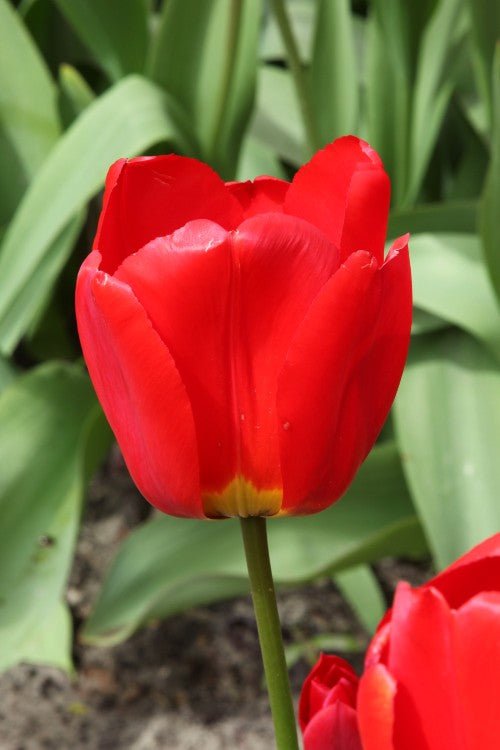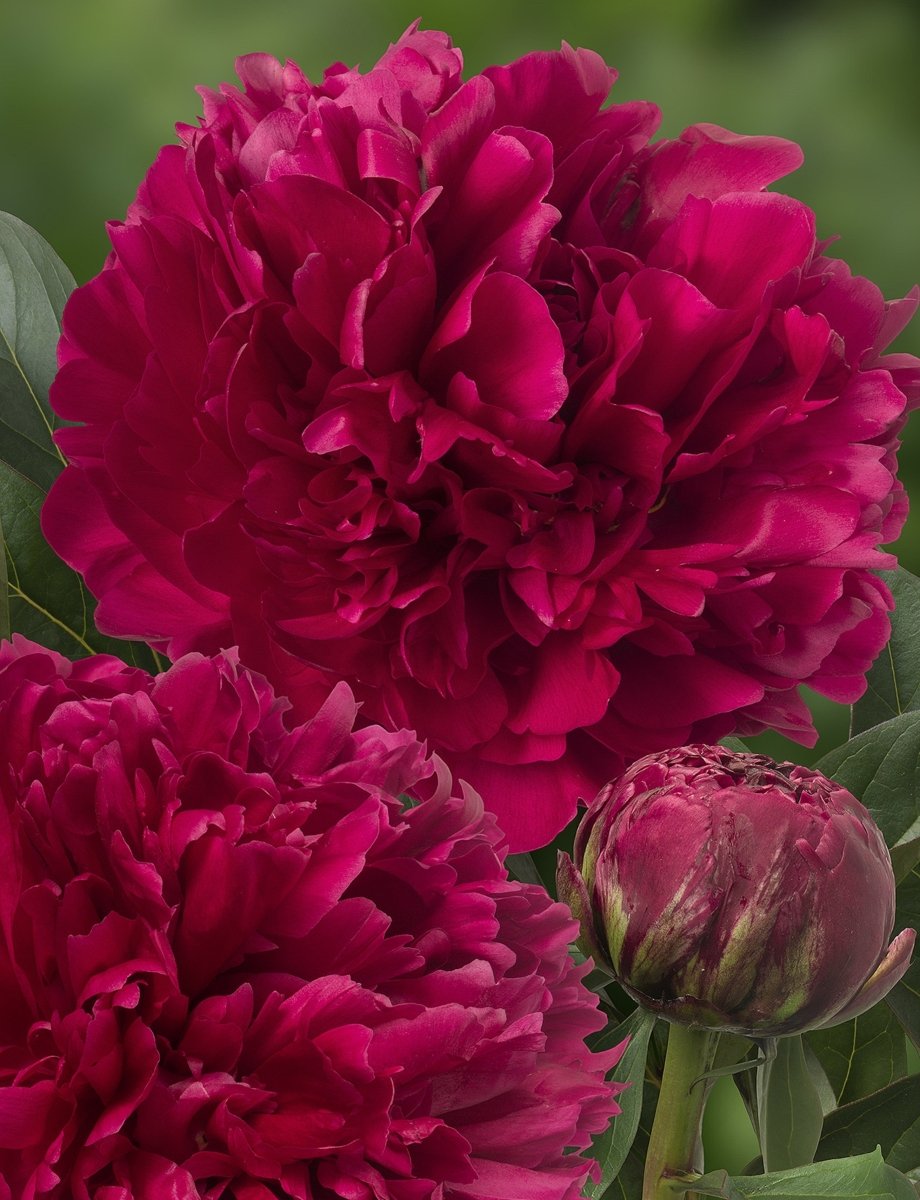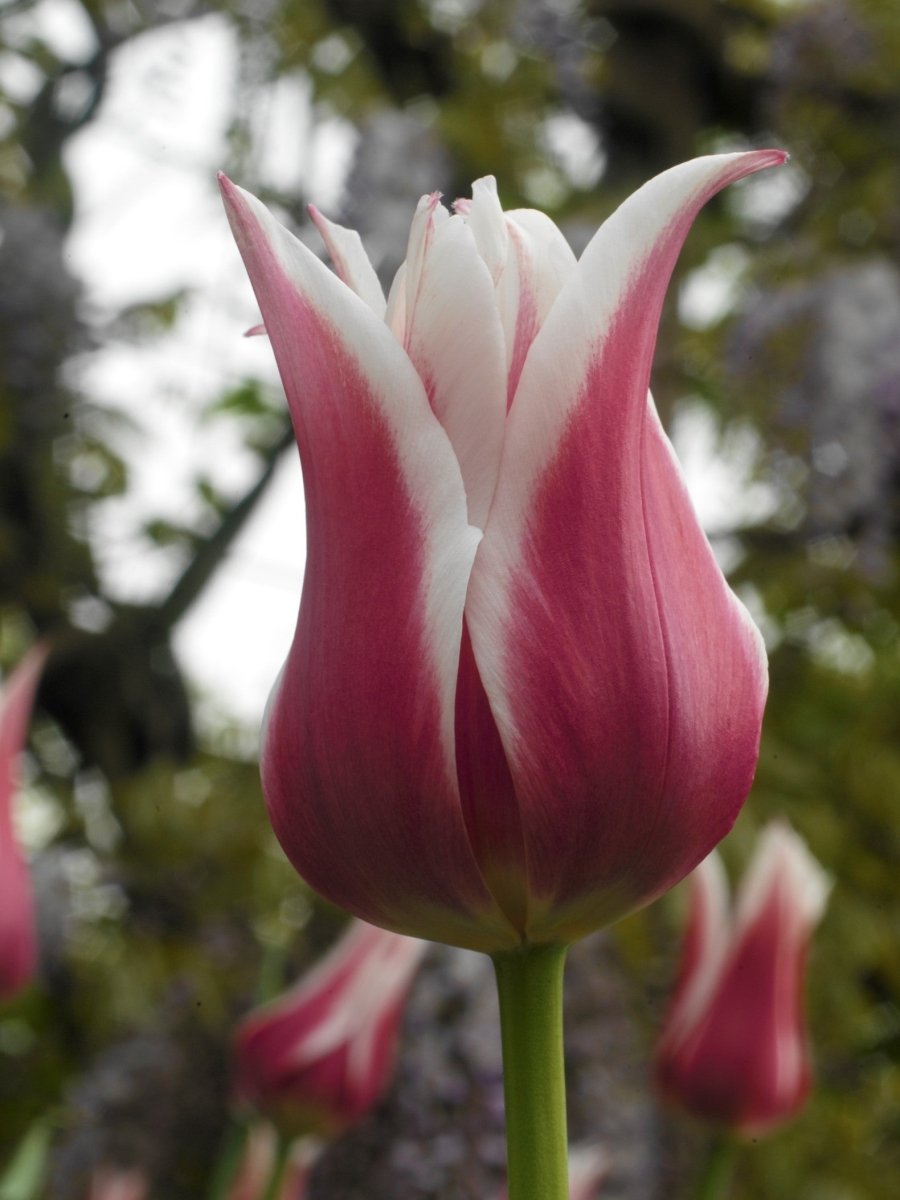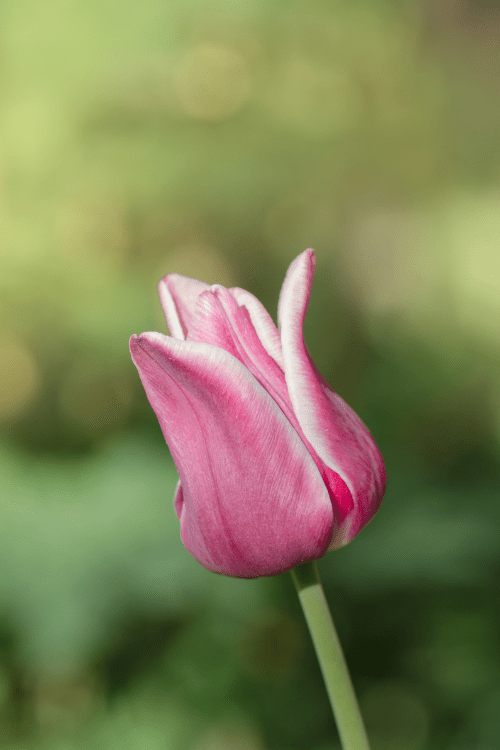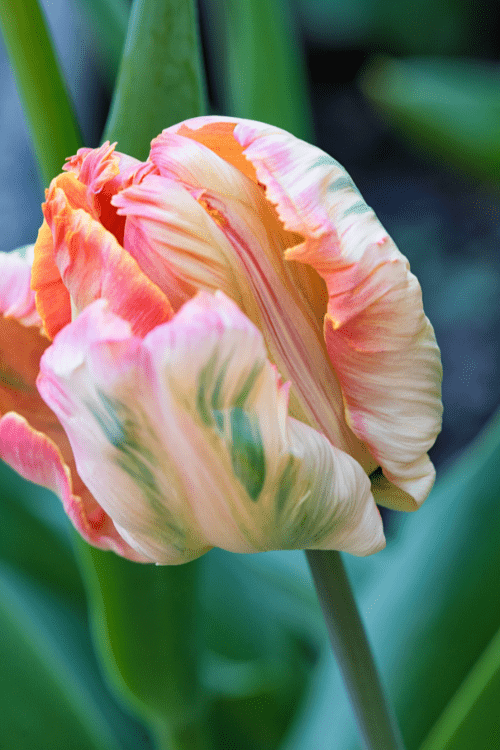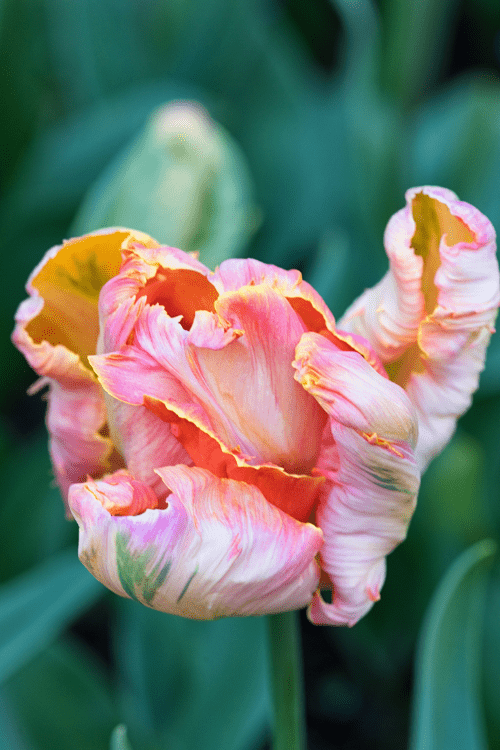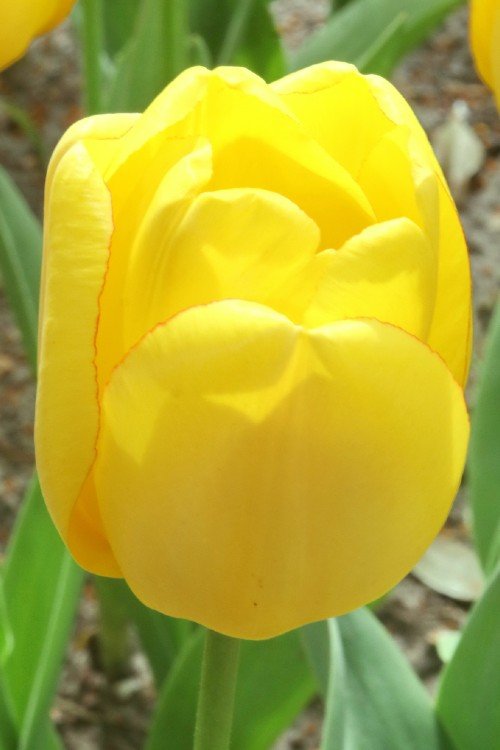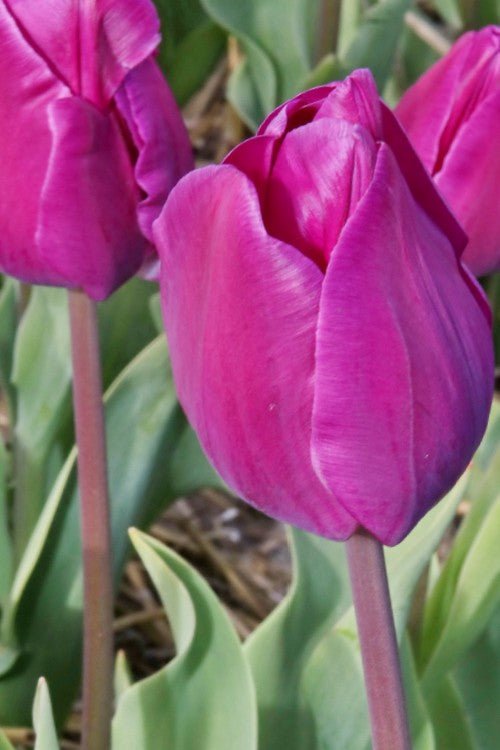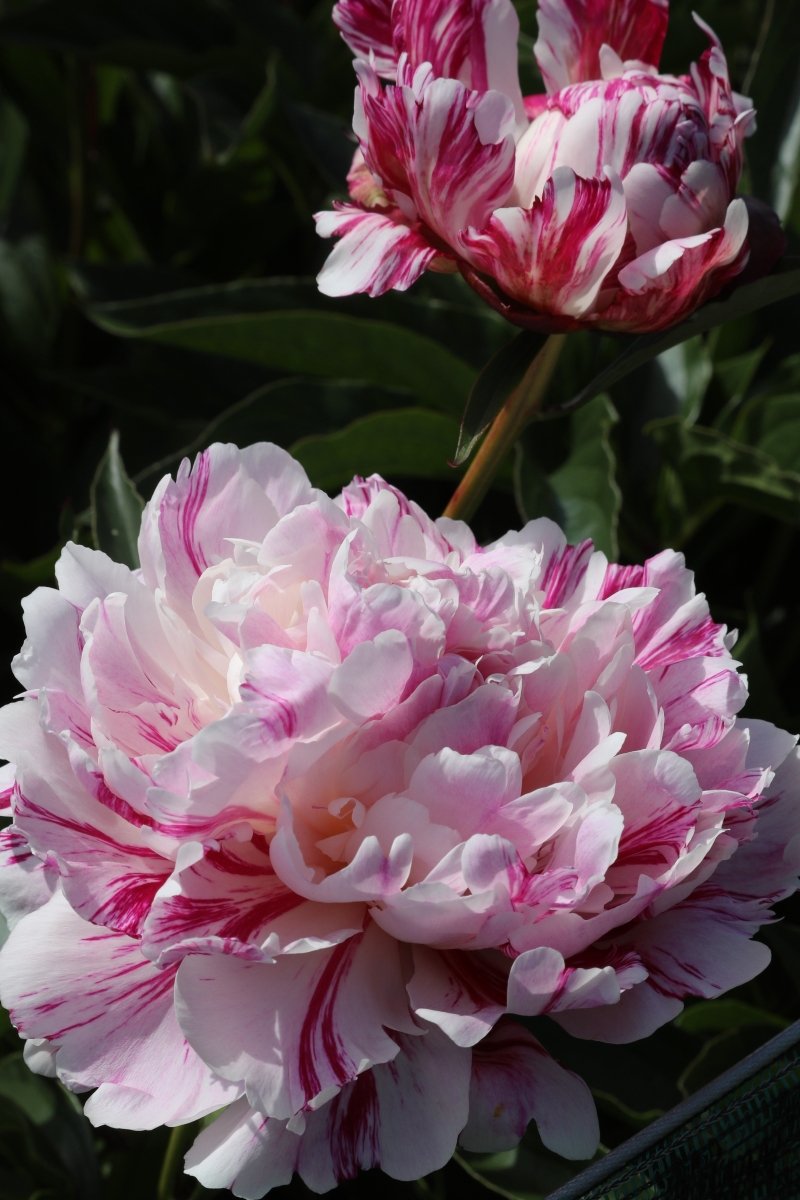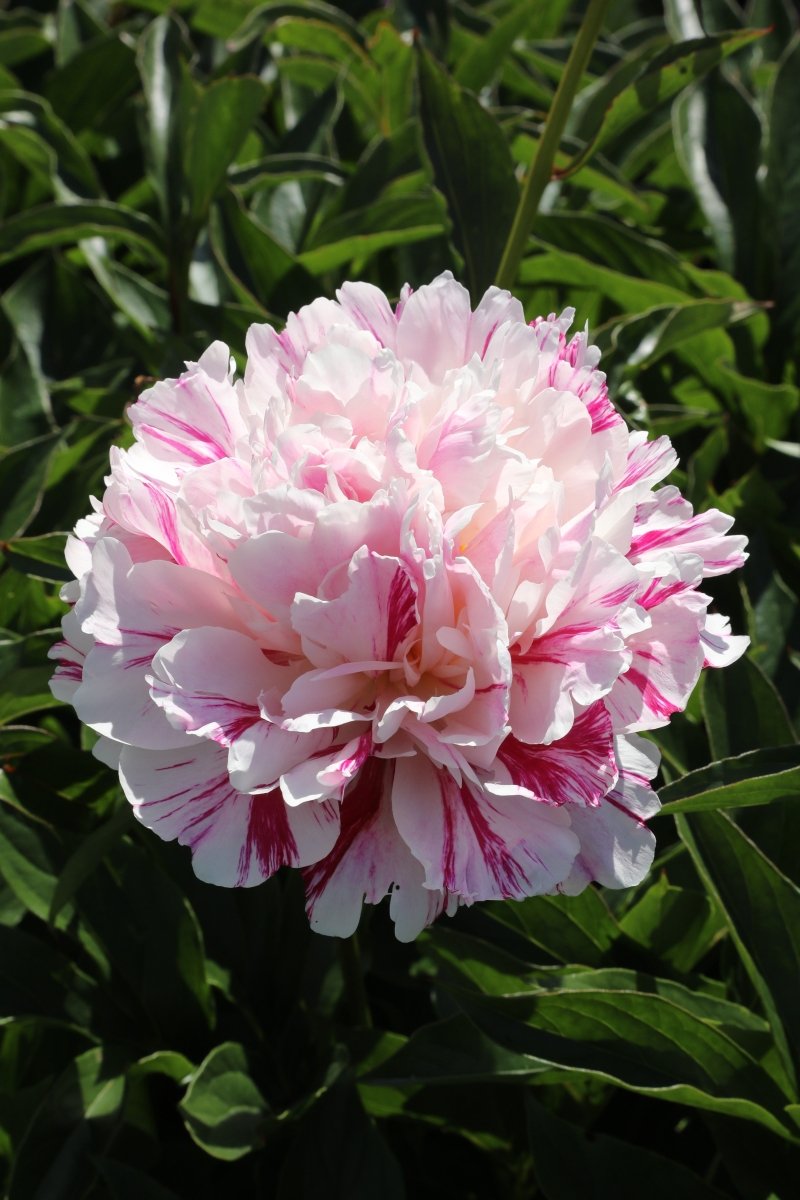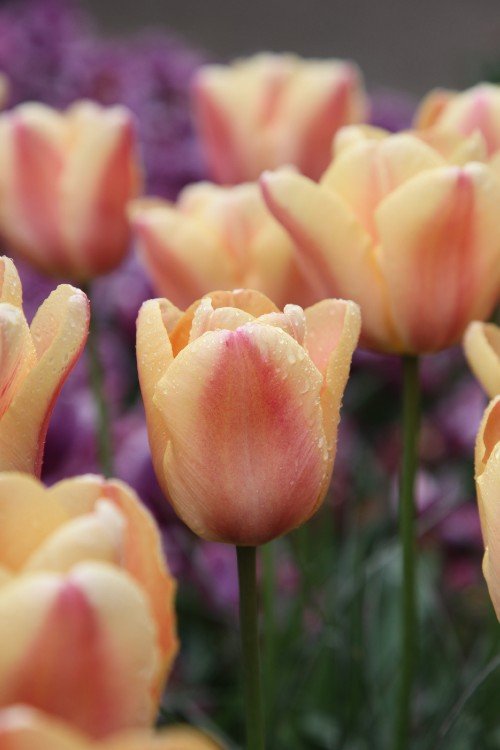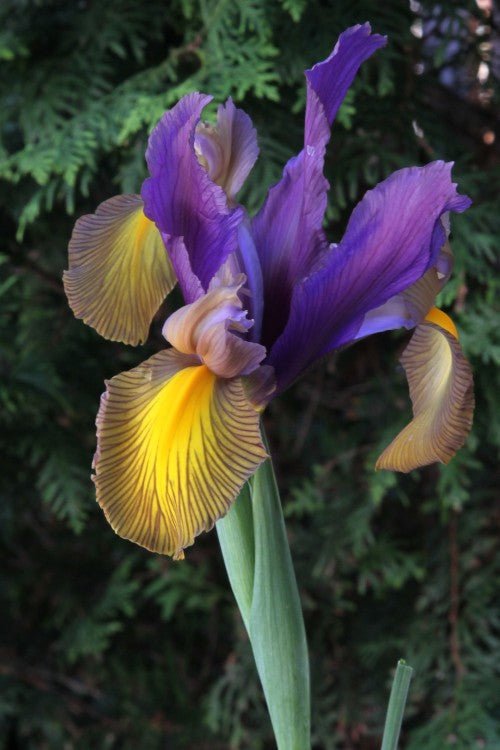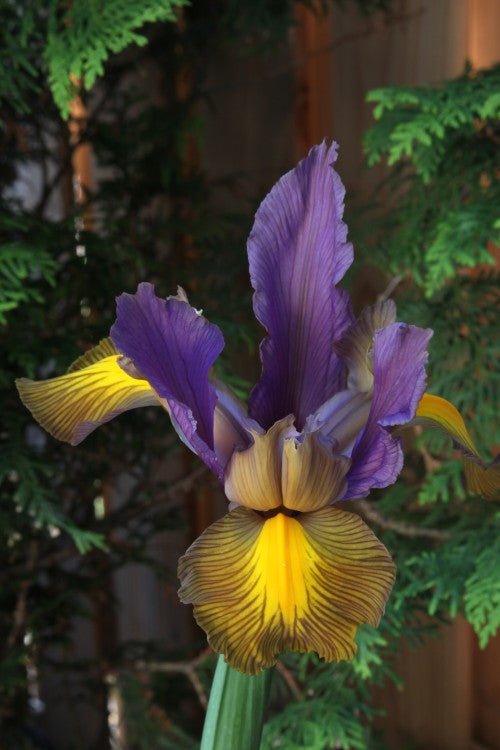Explore the Fall Planted collection - Spring Flowering bulbs
Sort by:
About Apeldoorn
Don't miss out on the stunning beauty of the Tulip Apeldoorn. Its striking red petals make a bold statement that will capture attention. With its easy care requirements, the Tulip Apeldoorn is perfect for both experienced and novice gardeners alike.
- Striking red petals
- Adds a bold and captivating touch to any garden or floral arrangement
- Easy to grow and maintain
- Ideal for both experienced and novice gardeners
- Thrives in full sun or partial shade
How to plant and take care of Apeldoorn
- Choose a well-draining location in your garden that receives ample sunlight.
- Dig a hole about 6 inches deep and place the bulb with the pointed end facing upwards.
- Space the bulbs about 4-5 inches apart to allow them room to grow.
- Cover the bulbs with soil and gently firm it down.
- Water thoroughly after planting and keep the soil evenly moist.
- Once the flowers bloom, remove the dead blooms to encourage further growth.
- After the tulips have finished blooming, allow the foliage to die back naturally.
- Protect the bulbs from extreme temperatures and pests during their dormant period.
About Red Magic
Add a pop of lively red to your garden with the Peony Red Magic! This charming flower effortlessly mixes simple beauty with a touch of class, making your garden stand out. Watch as your outdoor space transforms with the enchanting allure of Red Magic. Peonies are known for longevity and beauty. Red Magic grows to a height of 32-36’’.
- Pretty color: Red Magic boasts a rich, intense red hue, creating a stunning focal point in any garden.
- Sturdy stems: robust stems ensure resilience, preventing drooping even in adverse weather conditions.
- Lush petals: luxurious, layered petals form a lush and opulent flower head.
- Generous bloom size: with a substantial bloom size, Red Magic commands attention and adds a touch of opulence to your landscape.
How to plant and take care of Peony Red Magic
- Planting depth: place the bulb 1-2 inches below the soil surface.
- Sun exposure: optimal growth in well-drained soil with full sun exposure.
- Watering: keep soil consistently moist but avoid waterlogging.
- Supportive measures: provide stakes for support as the flower matures.
- Winter care: apply a layer of mulch in winter to protect the plant from frost.
About Foxy Foxtrot
Get ready to tango with the Tulip Foxy Foxtrot and witness a botanical spectacle that will have your garden bursting with flamboyant charm. It's time to let this captivating dancer steal the show! This stunning flower dances its way into your heart with a fiery grace that will leave you mesmerized. Read on for the key features and planting tips.
- Flamboyant Floral Footwork: The Tulip Foxy Foxtrot boasts crimson petals with orange and pink.
- Captivating Choreography: With each bloom, this tulip performs an elegant routine, twirling and swaying in the breeze, effortlessly stealing the spotlight in any garden or bouquet.
- Showstopper Stamina: The Tulip Foxy Foxtrot knows how to make an entrance and stay in the limelight. Its sturdy stem ensures longevity, allowing you to enjoy its vibrant display for longer.
How to plant and take care of the Foxy Foxtrot
- Find a sunny spot: Choose a location where your Tulip Foxy Foxtrot can soak up at least six hours of sunlight daily, encouraging its vivid hues to shine brightly.
- Prepare the stage: Plant the bulbs in well-drained soil, ensuring they are spaced apart to give each tulip room to showcase its individuality.
- Water with flair: Keep the soil evenly moist during the growing season, providing hydration to fuel the Tulip Foxy Foxtrot's passionate performance.
- Post-performance pampering: After the show, allow the foliage to wither naturally. This allows the tulip to replenish its energy for the next spectacular act.
About Globemaster
Discover the majestic beauty of the Allium Globemaster! This stunning perennial flower will add a touch of elegance to your garden with its large spherical blooms and vibrant purple hues. Perfect for creating eye-catching focal points or adding height to your flower beds, the Allium Globemaster is a must-have for any gardening enthusiast.
- Impressive, globe-shaped flowers
- Gorgeous purple color
- Sturdy and long-lasting blooms
- Attracts pollinators like bees and butterflies
- Low-maintenance plant
How to plant and take care of Globemaster:
- Choose a sunny location with well-draining soil
- Dig a hole twice the size of the bulb and place it with the pointed end facing up
- Space the bulbs approximately 6-8 inches apart
- Water thoroughly after planting and keep the soil evenly moist
- Apply a layer of mulch to help retain moisture and control weeds
- Fertilize in the spring with a balanced slow-release fertilizer
- Deadhead spent flowers to encourage more blooms
- Cut back the foliage after it turns yellow and dies back in the fall
About Lilac Wonder
Bring a touch of wonder and elegance to your garden with the Tulip Lilac Wonder. This extraordinary flower is not just your ordinary tulip; it's a magical symphony of lilac hues that will leave you wonderstruck. Let's dive into the key features that make this tulip truly remarkable.
- Captivating Lilac Magic: The Tulip Lilac Wonder boasts mesmerizing lilac petals that will transport you to a dreamy garden paradise. Its delicate shades of purple will add an elegant touch to any floral arrangement.
- Graceful and Compact: With its compact size, this tulip is perfect for borders, containers, or even as a charming accent in your garden. Its slender stem gracefully holds the enchanting blooms, creating a sight to behold.
- Easy to Grow: Don't let its captivating beauty fool you; the Tulip Lilac Wonder is surprisingly easy to grow. You don't need to be a green thumb to enjoy the wonders of this tulip.
- Early Blooming Delight: This beauty graces your garden with its stunning presence early in the spring, delighting your senses and announcing the arrival of a vibrant season.
How to plant and care for Lilac Wonder
- Choose a sunny spot with well-draining soil for your tulip bulbs.
- Dig a hole around 8 inches deep, placing the bulb with the pointed side facing up.
- Space the bulbs a few inches apart to give them room to grow and showcase their unique beauty.
- Water the bulbs regularly but avoid overwatering, as excessive moisture can lead to rotting.
- Apply a layer of mulch to conserve moisture and regulate the soil temperature.
- After the blooming season, allow the foliage to wither naturally before removing it. This helps the bulb store energy for the next year's growth.
About Ballade
Bring the captivating beauty of Tulip Ballade to your garden and be enchanted by its stunning colors and effortless charm.
- Vibrant and elegant: The Tulip Ballade boasts striking shades of purple and white, adding a touch of sophistication to any landscape.
- Long-lasting blooms: Enjoy weeks of breathtaking beauty as the Tulip Ballade's flowers gracefully open and stay fresh for an extended period.
- Reliable performer: This tulip variety is known for its strong stems, ensuring that the blooms stand tall and proud even in adverse weather conditions.
- Versatile usage: Whether you're planting them in beds, borders, or containers, the Tulip Ballade's beauty shines through, making it a versatile choice for various gardening projects.
How to plant and take care of Ballade
- Planting: Choose a sunny location with well-drained soil. Dig a hole 8 inches deep and place the tulip bulb pointy side up. Cover with soil and water thoroughly.
- Watering: Provide regular watering during the growing season, keeping the soil moist but not waterlogged.
- Fertilization: Apply a balanced slow-release fertilizer in early spring to promote healthy growth.
- Pruning: After the blooms fade, remove the flower stalk but let the foliage wither naturally. This allows the tulip bulb to store energy for next year's growth.
- Protection: Protect the tulip bulbs from pests such as squirrels or rabbits by using wire mesh or planting deterrent bulbs nearby.
- Winter care: In colder regions, cover the planting area with mulch to insulate the bulbs during the winter months.
About Picotee
Capture the vibrant beauty of nature with our Oriental Poppies Picotee! These stunning orange, red flowers will add a touch of elegance to any garden or floral arrangement. With their unique picotee edges and rich color palette, these Oriental Poppies are sure to make a statement.
- Exquisite picotee edges for a captivating look
- Vibrant colors that create a striking display
- Hardy and easy to grow
- Ideal for borders, beds, or containers
- Attracts butterflies and pollinators
How to plant and take care of Picotee
- Choose a sunny location with well-drained soil.
- Dig a hole that is slightly larger than the root ball and place the plant in the hole.
- Backfill the hole with soil and gently firm it around the plant.
- Water thoroughly after planting and keep the soil consistently moist but not waterlogged.
- Apply a balanced fertilizer once a month during the growing season.
- Remove faded flowers to encourage continuous blooming.
- Provide support for taller varieties to prevent them from falling over.
- Mulch around the plants to help conserve moisture and suppress weeds.
- In colder climates, apply a layer of mulch in winter to protect the plants.
About Parrot King
Behold the majestic Tulip Parrot King! This vibrant and flamboyant flower reigns supreme in the garden, mesmerizing all with its regal charm and colorful plumes. Don't miss the opportunity to crown your floral kingdom with this extraordinary beauty. Order now and let the reign of the Tulip Parrot King begin!
- Exquisite and Rare: The Tulip Parrot King is a true gem, with its unique and captivating parrot-like petals. It's a must-have for any discerning gardener seeking a touch of elegance.
- Vibrant Color Palette: This majestic tulip boasts a rich and diverse color range, from deep royal reds to striking streaks of yellow and green. Prepare to be enchanted by its kaleidoscope of hues.
- Heightened Drama: Standing tall and proud, the Tulip Parrot King reaches an impressive height of 20 inches (50 cm), adding a touch of drama and grandeur to any floral arrangement.
- Long-Lasting Beauty: Enjoy the regal presence of the Tulip Parrot King for an extended period, as it boasts a prolonged blooming season. Witness its captivating beauty day after day.
How to plant and take care of the Parrot King
- Planting Depth: Dig a hole about 6 inches (15 cm) deep to accommodate the bulb. Ensure proper spacing, allowing approximately 4 - 5 inches between each bulb.
- Soil Requirements: Choose a well-draining soil enriched with organic matter. The Tulip Parrot King thrives in slightly acidic to neutral soil pH levels.
- Sunlight Needs: Provide the Tulip Parrot King with ample sunlight exposure. Plant it in a location that receives at least 6 hours of direct sunlight per day.
- Watering Routine: Maintain a moderate watering routine, keeping the soil consistently moist but not waterlogged. Avoid overwatering, as it may cause bulb rot.
- Winter Protection: In colder climates, ensure the Tulip Parrot King is well-insulated during winter by adding a layer of mulch or straw over the soil.
About Golden Parade
These golden beauties will have your neighbors green with envy as they parade their way into your heart. Prepare for a regal spectacle of color and charm that will make your garden the talk of the town!
- Majestic Golden Glow: The Tulip Golden Parade boasts stunning golden petals that shimmer and shine under the sun, creating a captivating display of elegance.
- Captivating Parade: Each bulb produces a glorious flower that stands tall and proud, marching in perfect harmony with its fellow tulips.
- Endless Springtime Delight: These perennial tulips will bloom year after year, allowing you to relish in their golden parade for seasons to come.
- Easy to Grow: Even if you're a gardening novice, fear not! The Tulip Golden Parade is a low-maintenance beauty that thrives in various soil types and light conditions.
- Ideal for Cutting: Bring the golden parade indoors! These tulips make excellent cut flowers, adding a touch of opulence to any floral arrangement.
How to plant and take care of Golden Parade
- Find a sunny spot in your garden or a spacious container where the golden parade can truly shine.
- Dig a hole that's about three times the height of the bulb and place the bulb with the pointed side facing upward.
- Cover the bulb with soil and gently press it down to secure it in place.
- Water the bulb thoroughly after planting, and then water sparingly throughout the growing season, keeping the soil slightly moist.
- Remove any dead flowers to encourage continuous blooming and allow the bulbs to store energy for the next year.
- Sit back, relax, and bask in the radiant beauty of your Tulip Golden Parade as it graces your garden with its majestic presence.
About Princess Irene
Prepare to be enchanted by Tulip Princess Irene as it transforms your garden into a realm of majesty and elegance. With its captivating colors and easy care, this tulip variety is the perfect addition to any floral kingdom. This majestic tulip variety is a captivating blend of rich reds and warm oranges. Order now and let the royal reign begin!
- Striking color combination of purple and orange, fit for a royal garden.
- Large, elegant blooms that command attention.
- Robust and hardy, perfect for both novice and experienced gardeners.
- Symbolizes grace, charm, and nobility.
How to plant and take care for Princess Irene
- Choose a sunny location with well-draining soil for optimal growth.
- Plant bulbs in the fall, before the first frost, at a depth of about 6 inches.
- Water regularly during the growing season, keeping the soil moist but not waterlogged.
- Apply a balanced fertilizer in early spring to nourish the bulbs.
- After the tulips have bloomed, allow the foliage to wither naturally before removing it.
About Blue Mouse Ears
Introduce your garden to the Hosta Blue Mouse Ears. This great Hosta is a miniature hosta that produces blue-green curled leaves and has lavender Lily-like flowers.
- 8-12" tall and 11" wide
- A unique and compact variety of hosta with blue-green leaves
- Forms small, mouse ear-shaped rosettes
- Ideal for rock gardens, container gardens, and as a border plant
- Grows best in partial shade and well-drained soil
- Low-maintenance plant that is resistant to deer and rabbits
- Blooms in mid-summer
How to care for Blue Mouse Ears?
- Choose a location with partial shade and well-drained soil
- Dig a hole twice the width of the root ball and just as deep
- Plant the root ball so the top of the soil is level with the surrounding soil
- Water the plant well and add a layer of mulch to retain moisture
- Fertilize with a balanced fertilizer in early spring
- Remove any dead or yellow leaves to keep the plant looking its best
- Divide the plant every 3-4 years to encourage healthy growth
About Peter Stuyvesant
Transform your garden into a mesmerizing oasis with the Hyacinth Peter Stuyvesant. This exquisite flower variety will captivate your senses with its deep, velvety purple blooms and intoxicating fragrance. Perfect for adding a touch of elegance and charm to your garden or indoor space, the Hyacinth Peter Stuyvesant is a must-have for any flower enthusiast.
- Gorgeous deep purple blooms that add a pop of color to any setting
- Rich, fragrant scent that fills the air with sweetness
- Easy to grow and maintain, making it suitable for both experienced and novice gardeners
- Ideal for planting in borders, containers, or as a stunning cut flower arrangement
- Blooms in early spring, providing a burst of color after the winter months
How to plant and take care of Peter Stuyvesant
- Choose a well-draining location with full or partial sunlight for planting
- Dig a hole that is approximately 6-8 inches deep and place the bulb in the hole, pointed side up
- Space the bulbs about 4-6 inches apart to allow for adequate growth
- Cover the bulbs with soil and water thoroughly to settle the soil
- Ensure the soil remains moist but not waterlogged during the growing season
- Deadhead faded blooms to encourage further flowering and remove any yellowing foliage
- After the blooms have finished, allow the foliage to die back naturally before cutting it back
- Protect the bulbs during the winter months by covering them with a layer of mulch or straw
About Orange Balloon
Presenting the Tulip Orange Balloon - a burst of color that will take your garden to new heights! These vibrant tulips are no ordinary flowers; they bring a sense of joy and playfulness to any space. Get ready to elevate your floral game with these captivating beauties! Hurry and grab your own colorful balloons today.
- Bright and bold: The Tulip Orange Balloon showcases a mesmerizing hue of orange that stands out from the crowd, making it a true showstopper in your garden.
- Eye-catching blooms: These tulips boast large, balloon-like flowers that demand attention and create a stunning focal point wherever they're planted.
- Spring awakening: As a spring-flowering bulb, the Tulip Orange Balloon heralds the arrival of warmer days, signaling the end of winter with its vibrant display.
- Low maintenance: These tulips are hassle-free companions, requiring minimal care and attention while delivering maximum impact.
How to plant and take care of Orange Balloon
- Choose a sunny spot: Find a location in your garden that receives full sun to ensure optimal growth and vibrant blooms.
- Prepare the soil: Ensure the soil is well-drained and enriched with organic matter, allowing the tulips to establish a strong root system.
- Planting depth: Dig a hole around 6 inches deep and place the bulbs pointy side up, spacing them about 4-5 inches apart.
- Watering needs: After planting, give the bulbs a good watering to settle them in. During the growing season, water regularly, keeping the soil moist but not waterlogged.
- Fertilize wisely: Apply a balanced slow-release fertilizer when planting to provide essential nutrients. Avoid excessive fertilization, as it may lead to weak stems.
- Be patient and enjoy: Once planted, allow nature to work its magic. Soon, you'll be rewarded with the enchanting sight of Tulip Orange Balloon blooms gracing your garden.
About Negrita
Bring a touch of mystique and elegance to your garden with the Tulip Negrita. Its dark allure will create a captivating ambiance that will leave everyone spellbound! So, grab your gardening gloves and let the magic unfold! Get ready for a burst of deep, dark, and dramatic blooms that will steal the spotlight in your floral paradise.
- Elegant and mysterious: The Tulip Negrita boasts velvety, dark purple petals that exude an air of intrigue and sophistication.
- Eye-catching color: Its deep hue creates a striking contrast against other flowers, making it a showstopper in any garden.
- Reliable bloomer: With its sturdy stems and generous flowering capacity, Tulip Negrita guarantees a long-lasting display of its captivating blossoms.
How to plant and take care of Negrita
- Choose a sunny spot: Find a location in your garden that receives full sunlight for at least six hours a day.
- Well-drained soil: Ensure the soil is well-drained to prevent waterlogging, as Tulip Negrita prefers a dry resting period.
- Planting depth: Dig a hole approximately six inches deep and place the bulb with the pointed end facing upwards.
- Spacing: Space the bulbs about four to five inches apart to allow for proper growth and circulation.
- Water moderately: Keep the soil slightly moist but avoid overwatering to prevent bulb rot.
- Mulch for insulation: Apply a layer of mulch around the plants to protect them from extreme temperatures.
- Deadhead spent blooms: Remove faded flowers to encourage continuous blooming and maintain a tidy appearance.
- Winter care: In colder climates, cover the planting area with a layer of mulch or straw to protect the bulbs during winter.
About Purple
Experience the exquisite beauty of the Crocus Purple, a remarkable flowering plant that will bring a burst of vibrant colors to your garden. With its stunning purple blooms and delicate petals, this crocus variety is a must-have for any plant enthusiast.
- Striking purple blooms that add a touch of elegance to your garden
- Delicate and intricate petals that create a captivating display
- Compact size, perfect for borders, rock gardens, or containers
- Early blooming, signaling the arrival of spring
How to plant and take care of Purple
- Choose a sunny or partially shaded location for planting
- Ensure well-drained soil to prevent waterlogging
- Plant the bulbs in the fall, around 3-4 inches deep and 2-3 inches apart
- Water the bulbs thoroughly after planting, and keep the soil slightly moist
- Apply a layer of mulch to protect the bulbs during winter
- Provide occasional watering during dry spells, especially in the summer months
- Deadhead faded blooms to encourage continuous flowering
- Avoid excessive fertilizer application, as it may result in floppy growth
About Candy Stripe
Candy Tripe will delight garden enthusiasts worldwide, this exquisite variety showcases nature's artistry at its finest. With its unique candy cane-like stripes and luxurious blooms, it will be the centerpiece of any floral display.
- Mesmerizing candy cane stripes
- Luxurious blooms
- Captivating fragrance
- High and tall stems
How to care for Candy Stripe
- Select a well-drained location with partial to full sunlight to ensure optimal growth.
- Dig a hole that is wide and deep enough to accommodate the bulb, ensuring the top of the bulb is positioned just below the soil surface.
- Space multiple bulbs at least 2 feet apart to allow ample room for growth.
- Water regularly, keeping the soil moist but not overly saturated.
- Apply a layer of mulch around the plant to conserve moisture and suppress weed growth.
- Provide support, such as stakes or cages, to prevent the heavy blooms from drooping or collapsing.
- Remove spent flowers to promote further blooming and maintain the plant's vitality.
- In colder climates, protect the bulb during winter by applying a layer of mulch or covering with a breathable fabric.
About Apricot Foxx
Bring the beauty of Tulip Apricot Foxx to your garden and enjoy its stunning blooms year after year. Its stunning color and graceful form make it a perfect addition to any landscape or floral arrangement.
- Striking apricot-colored blooms
- Elegant and graceful form
- Adds a touch of sophistication to your garden
- Ideal for both landscapes and floral arrangements
- Easy to grow and maintain
How to plant and take care of Apricot Foxx
- Choose a well-draining location with full or partial sunlight.
- Plant bulbs in the fall, before the first frost, at a depth of 6 inches.
- Space bulbs about 4-5 inches apart.
- Water thoroughly after planting and keep the soil consistently moist during the growing season.
- Apply a balanced fertilizer once shoots emerge.
- Deadhead faded flowers to promote continuous blooming.
- Allow foliage to yellow and wither naturally before removing it.
- Protect bulbs from excessive moisture and rot by ensuring proper drainage.
About Eye of the Tiger
Immerse yourself in the allure of the Iris Eye of the Tiger and create a garden masterpiece that will leave everyone enchanted. This striking iris variety boasts vibrant, tiger-striped petals that are sure to leave you in awe. With its unique coloration and graceful form, the Iris Eye of the Tiger is a must-have for any garden enthusiast.
- Vibrant tiger-striped petals that create a bold and exotic look
- Sturdy and tall stems that make it perfect for cut flower arrangements
- Blooms in late spring, bringing a burst of color to your garden
- Low-maintenance plant that thrives in both sunny and partially shaded areas
- Hardy and resilient, withstanding various weather conditions
How to plant and take care of Eye of the Tiger
- Choose a location that receives full to partial sunlight.
- Prepare the soil by loosening it and adding organic matter for better drainage.
- Dig a hole that is deep enough to accommodate the rhizome, ensuring that the top is at or just below the soil level.
- Space the rhizomes approximately 3 inches apart to allow for proper growth.
- Water thoroughly after planting and keep the soil evenly moist but not waterlogged.
- Apply a balanced fertilizer once in early spring and again after blooming.
- Remove spent flowers to encourage new blooms and maintain a tidy appearance.
- Divide the rhizomes every three to four years to prevent overcrowding and promote healthy growth.
FAQs

